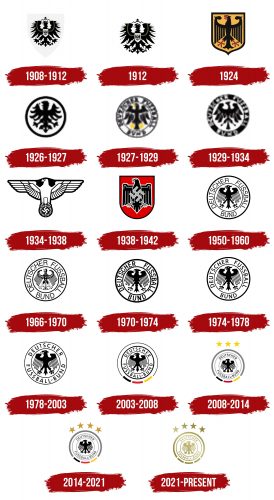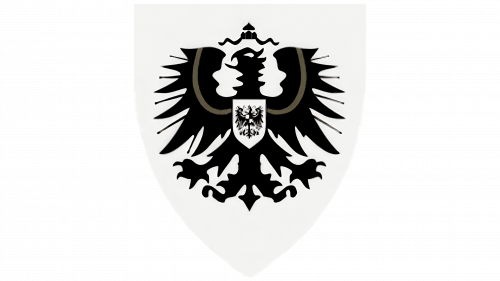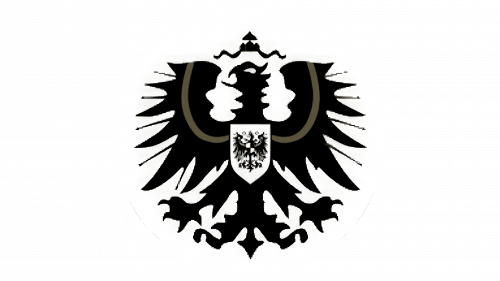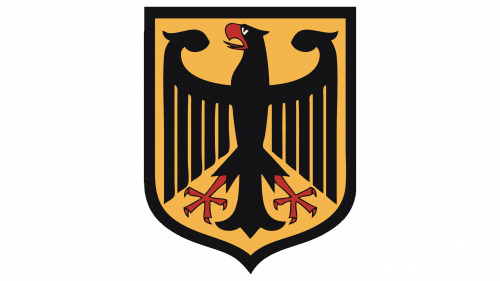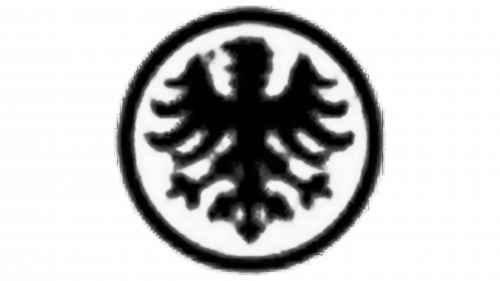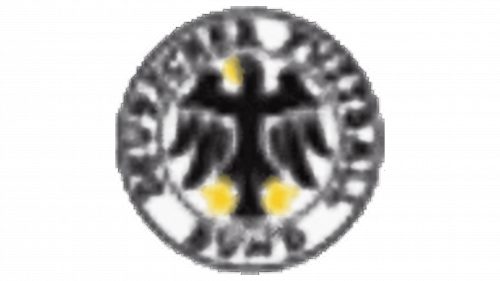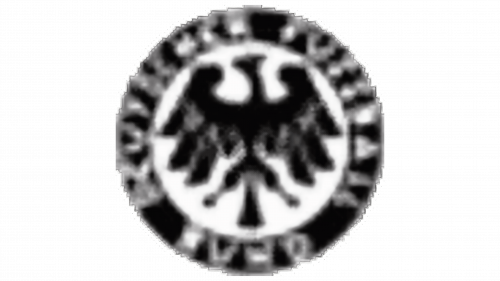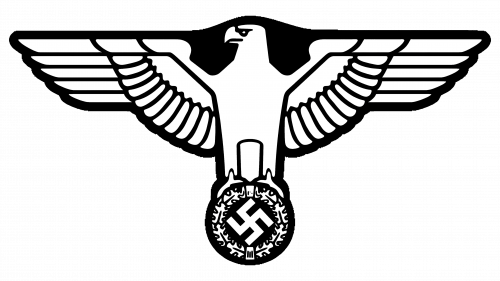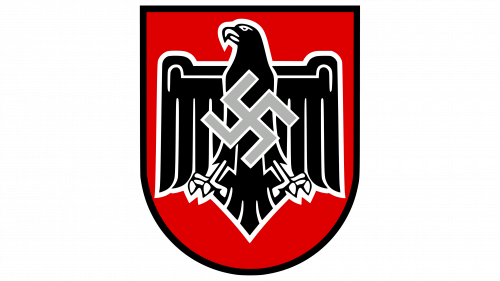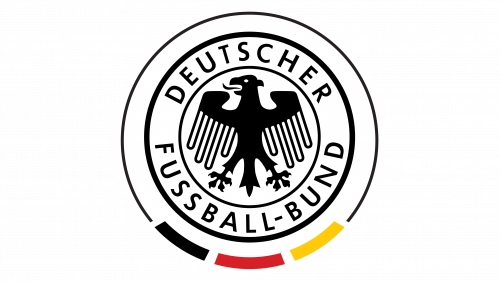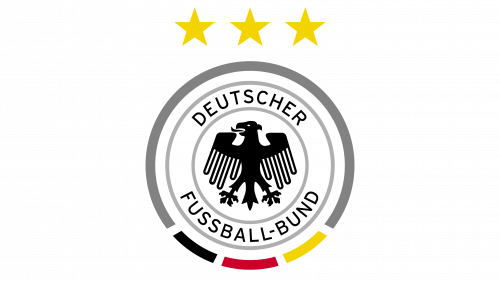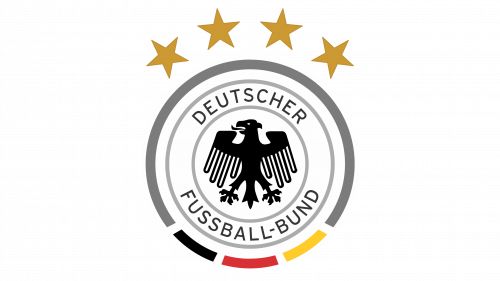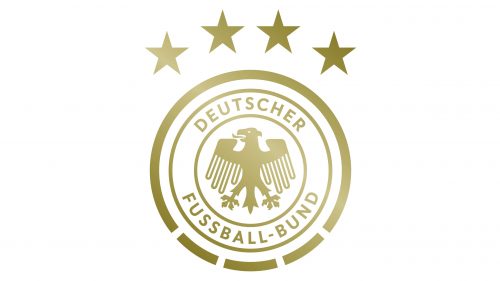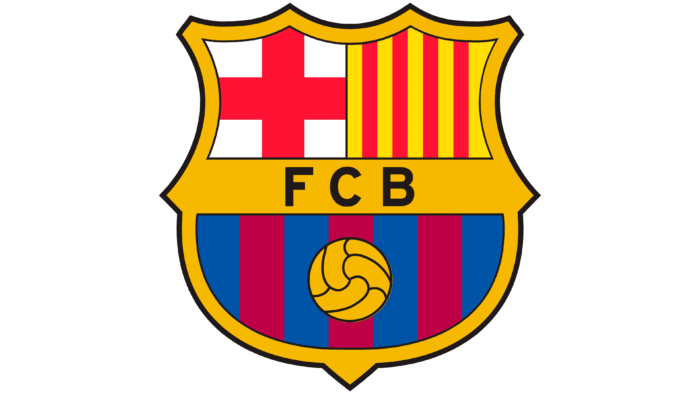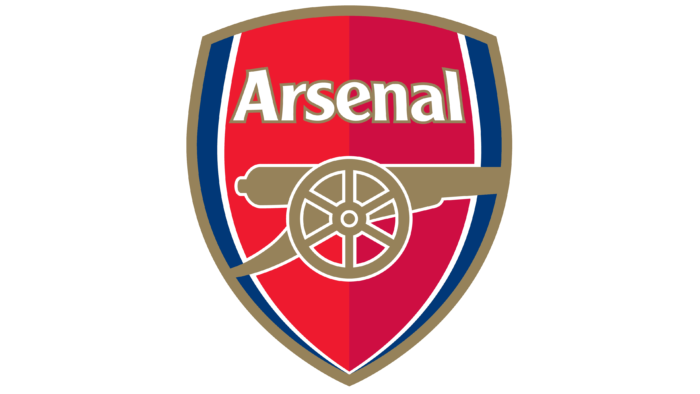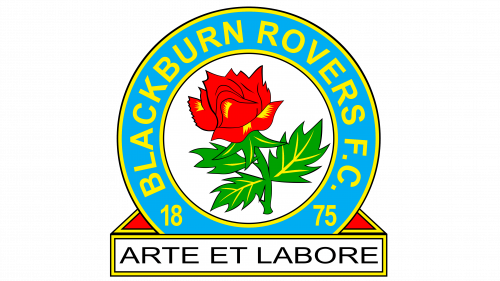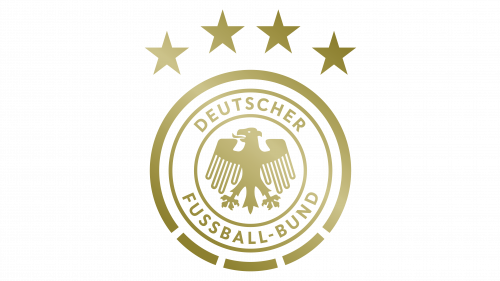 Germany National Football Team Logo PNG
Germany National Football Team Logo PNG
The Germany National Football Team logo is unambiguously the best football club in the world. Its rich design and shine of gold reflect the athletes’ pride in their top rankings and numerous victories.
Germany National Football Team: Brand overview
The German national football team stands as a titan of the sport, with a history rich in victories and legendary figures. The German Football Association (DFB) was established in 1900, and by 1908, the national team played its first official match against Switzerland, resulting in a 5-3 defeat. Fast-forward to 1934, and Germany made a strong impression at their World Cup debut, reaching the semifinals. The 1936 Berlin Olympics saw them secure a silver medal.
Post-World War II, Germany split into West Germany (FRG) and East Germany (GDR). West Germany’s national team burst onto the global stage at the 1954 World Cup in Switzerland, famously defeating Hungary’s “Mighty Magyars” 3-2 in the final. Helmut Rahn, Toni Turek, Fritz Walter, and Horst Eckel became heroes.
The late 1960s and early 1970s heralded a new era of dominance for West Germany, led by the iconic Franz Beckenbauer. The team clinched the 1972 European Championship and triumphed at the 1974 World Cup, overcoming the Netherlands 2-1 in the final. In these victories, stars like Gerd Müller, Sepp Maier, and Paul Breitner were pivotal.
Franz Beckenbauer returned as manager in 1984, steering West Germany to another World Cup title in 1990. In the final, Andreas Brehme’s penalty secured a 1-0 win over Argentina. The squad featured legends such as Lothar Matthäus, Jürgen Klinsmann, and Brehme.
Joachim Löw’s tenure from 2006 to 2021 marked another golden era, culminating in Brazil’s 2014 World Cup victory. This included a legendary 7-1 semifinal win over the hosts and a 1-0 final victory against Argentina, with Mario Götze scoring the decisive goal. Key figures during this time were Manuel Neuer, Toni Kroos, and Thomas Müller. However, the team faced challenges at the 2018 World Cup and Euro 2020, exiting early.
In 1996, a reunified Germany celebrated their first European Championship win, overcoming the Czech Republic with Oliver Bierhoff’s “golden goal.” Known for their precision and resilience, the German team earned the moniker “Die Mannschaft.”
Hansi Flick took over from Löw, leading the team to a strong qualification for the 2022 World Cup in Qatar. Yet, they were unexpectedly eliminated in the group stage, trailing behind Japan and Spain.
The current German team is in a phase of transformation, with Joshua Kimmich, Leon Goretzka, and Serge Gnabry emerging as new leaders. Germany’s football legacy includes legends like Franz Beckenbauer, Gerd Müller, Lothar Matthäus, Jürgen Klinsmann, and Miroslav Klose, whose contributions have impacted the sport.
Germany’s hallmark is its ability to regenerate and produce new stars, ensuring that the team quickly rebuilds to compete at the highest level, even after the departure of great players. As of August 2023, Germany ranks 15th in the FIFA standings. Despite this, with its storied history and talented roster, Germany remains a perennial contender in any major tournament.
Meaning and History
What is the Germany National Football Team?
The German National Football Team, known as Die Mannschaft, is the representative football team of Germany in international competitions. It is managed by the German Football Association (DFB). The team has a rich history known for its strong performances in major tournaments, including winning the FIFA World Cup four times. They are regarded as one of the powerhouse teams in international football, consistently ranking among the top teams globally.
1908 – 1912
The German National Football Team logo features the eagle of the Holy Roman Emperor, emphasizing the country’s deep historical roots and long-standing commitment to the sport.
The emblem was created for the first official match against Switzerland after the formation of the German Football Association. Above the eagle, a crown with a heraldic ribbon symbolizes a divine blessing for the future development of football in the country.
A repetition of the coat of arms on the eagle’s chest highlights the continuity of the Roman Empire ideals by the leaders of modern Germany.
1912
The simple image of the shield that once held the eagle has been removed from the emblem, bringing the historic symbol to the forefront. This change highlighted the team’s strength and readiness to conquer new heights. The emblem commemorated the decisive match against Russia at the Olympic Games, where the team triumphed with a score of 16-0. This redesign emphasizes the team’s power and significant achievements, reflecting their determination and competitive spirit.
1924
The team emblem was replaced with the coat of arms of the Weimar Republic, featuring an orange shield with a black border and an eagle with a red beak and claws. The eagle’s wings are bent like a boxer flexing his muscles, highlighting the athletes’ physical preparedness. The removal of royal symbols conveyed confidence in their abilities to achieve impressive results. The logo demonstrated readiness for teamwork and sensitivity to the political changes happening in the country.
1926 – 1927
After selecting the team’s first manager, the logo was changed again. The heraldic eagle was placed inside a circle, linking the bird to the football theme. The national team players are united by love for their homeland and the courage and strength of their ancestors. The eagle’s design is closer to the imperial style with spread feathers, signifying a return to their roots. The bird appears full of pride and grandeur, inspiring the team and blessing them for their game.
1927 – 1929
The logo’s circle has been transformed into a seal featuring the name of the football federation: Deutscher Fußball-Bund. The eagle’s wings are fuller, and its beak and claws are coated in gold, showcasing the German team’s successes on the football field. This updated emblem highlights the team’s achievements and adds a sense of grandeur and pride to its visual identity.
1929 – 1934
The black-and-white shades distinguish the team’s logo from the end of the Weimar Republic era. The black border and white lettering make the emblem resemble an antique coin. The logo conveys the strength and power of the players and the team’s invincibility. This design captures the historic essence of the period, reflecting the team’s enduring resilience and formidable presence in the world of football.
1934 – 1938
In 1934, the team’s logo featured the symbol of Nazi Germany and the Nazi Party – an eagle with outstretched wings clutching an oak wreath with a swastika. The proud profile of the bird and the clean, straight lines made the emblem appear strong and confident, embodying dominance and an unyielding will to win. This design reflected the era’s emphasis on power and determination, portraying a forceful image of the team’s spirit and ambition.
1938 – 1942
The team’s emblem was reimagined four years later, on the eve of World War II, following the unification of Germany and Austria. A black eagle was placed on a red shield, the color of the Austrian flag, symbolizing passion and energy. On the eagle’s chest was a swastika, a symbol historically representing luck, prosperity, and protection. In the context of Nazism, it signified the purity and superiority of the Aryan race. In 1938, the logo emphasized national pride and the ideals the new unified football team shared and carried to the world.
1950 – 1960
When Germany was allowed to return to football after the war, the team chose the previous design of the black heraldic eagle in a circular form with a wide border as their logo. The “Deutscher Fussball Bund” inscription around the circle appeared refined and light. The absence of bright colors and the smooth lines conveyed the team’s calmness and balance and their desire to participate in global sports without conflicts. Retaining the image of the ancient bird reflected a wish to remember the best aspects of their history.
1966 – 1970
The eagle from 1966 was reduced in size and resembled a sports wrestler. The emblem primarily focused on the football association, which played a crucial role in creating and supporting the national team. This update to the logo coincided with the team’s second-place finish at the 1966 World Cup. The design emphasized the association’s significant contributions and celebrated the team’s remarkable achievement on the global stage.
1970 – 1974
In 1970, the emblem reverted to the design from 1950 but with bolder lines in the outline and lettering. The logo exudes confidence. Despite losing in the semifinals, Germany managed to defeat their perennial rival, England, which had taken the championship title from them in 1966. Additionally, they played a memorable match against Italy, known as the “Game of the Century.” This emblem reflects the team’s resilience and notable achievements during this period, showcasing their strength and determination on the international stage.
1974 – 1978
In 1974, the logo’s lines and lettering became lighter while retaining the overall design and font. These changes made the emblem look more dynamic and free-spirited. The emblem marked the team’s victory in the World Cup and reflected the hospitality of the tournament’s host country. This refreshed design symbolized the event’s triumph and welcoming nature, highlighting the team’s success and the positive atmosphere of the championship.
1978 – 2003
The emblem changed the shape of the eagle’s head following the appointment of a new head coach for the team. The “Deutscher Fussball Bund” inscription was also revised, now featuring a hyphen between the last two words. This update symbolized a new direction and leadership for the team, reflecting the changes and the renewed spirit brought by the new coach.
2003 – 2008
2003, the familiar logo was enhanced with an outer circle that symbolized Germany’s unification. At the bottom of the circle, three separate segments were added, each colored in the national flag’s hues. This update aimed to reflect the nation’s unity and cohesion, emphasizing the harmony brought about by reunification.
2008 – 2014
In 2008, the black lines of the logo were replaced with softer gray ones. This change symbolized flexibility, professional growth, and readiness to evolve. The three colored segments at the bottom balanced the three stars at the logo’s top, representing the World Cup titles. This update conveyed a sense of maturity and adaptability, reflecting the team’s commitment to progress and excellence while honoring their past achievements.
2014 – 2021
The emblem was adorned with a fourth star to mark a new victory at the World Cup. The commemorative symbols are dark gold, representing the team’s complete realization and achievements. This addition celebrates the latest triumph and highlights the team’s enduring success and excellence.
2021 – today
The modern emblem has changed to a gold monochrome. This symbol emphasizes leadership and outstanding victories, highlighting the team’s superiority over most other teams worldwide. Germany holds an esteemed second place in World Cup victories and shares the leading position in the European Championship with Spain. The emblem with shining gold conveys national pride and the theme of supremacy.
